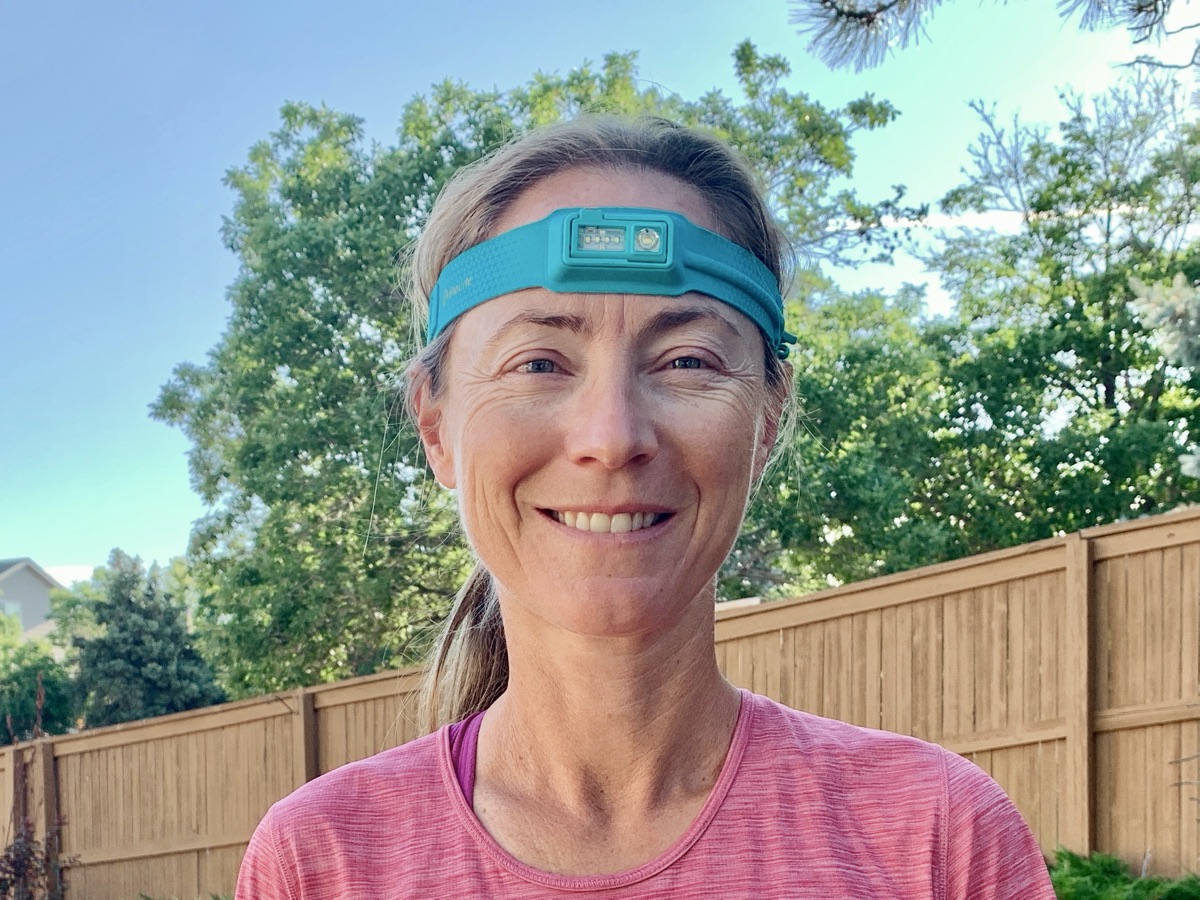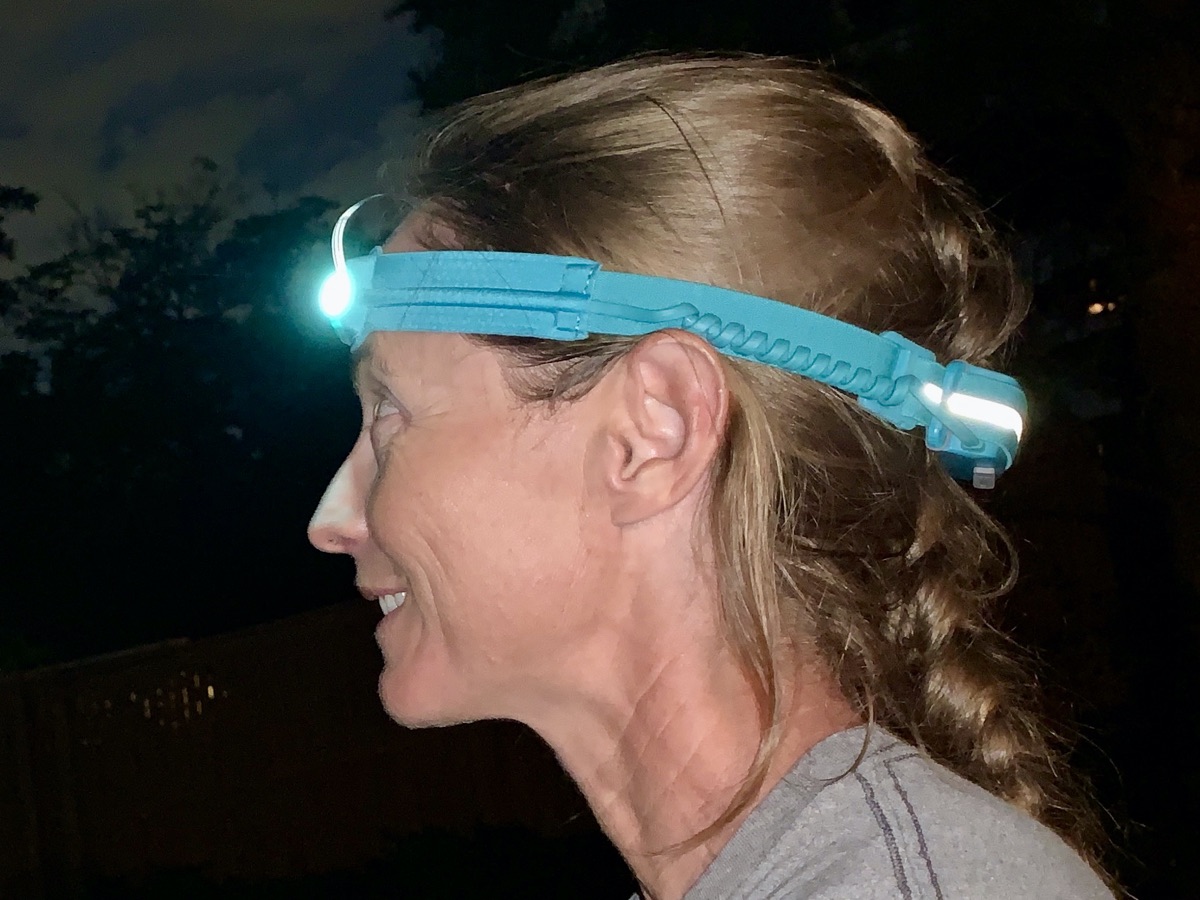Summer adventures are in full swing and though we may not have races on our short-term calendar this year, it’s still the season for pre-dawn starts and “racing” the approaching night to fit in the exploration and celebratory trail journeys we have on our list. Perhaps the lack of races has given you more time for camping or fastpacking routes in your local hills and mountains. Regardless of how you’re choosing to get after it outside, if you find yourself looking for a new rechargeable headlamp to facilitate your adventures, BioLite has an interesting option to consider with their BioLite HeadLamp 330 ($60). It is super lightweight and integrates the sleek, low-profile 330 lumen (max output) LED light within a smooth, sweat-wicking headband in the front while positioning the micro USB-rechargeable lithium ion battery on the back of the head. The result is a 100% no-bounce, easily adjustable, and extremely comfortable user experience.
Shop the BioLite HeadLamp 330BioLite HeadLamp 330 Fit
At a mere 69 grams (2.43 ounces), the headlamp is one of the rare lights that doesn’t create undo head pressure or much of a sense that it’s even there over a few hours of wear time. This is rather impressive given how few headlamps achieve this level of comfort. BioLite offers a one-year limited warranty on the headlamp and has a “HolyFit Guarantee” that allows you to try it out and return the headlamp within 30 days in case the fit isn’t working for you.
BioLite utilizes their proprietary 3D SlimFit Construction to integrate the light completely into the headband fabric, resulting in only 9 millimeters of front profile. While the full encapsulation of the slim light within the band is brilliant, the battery housing in the back is also bounce-free because the headband runs along both the back and front sides of the battery pack, which snugs it down further as you adjust the band securely around your head. From a running standpoint, I typically layer a thin buff beneath my headlamps to improve the comfort and ride and to decrease pressure points especially during an all-night adventure, but with the BioLite 330, I don’t have to. A reflective strip on the back-facing side of the band lights up well on the trail for improved safety and visibility.
The light housing itself has a tilt-in-space function with four angle options on a “ratchet” system that holds steady where you set it even with less-than-graceful downhill running. The tilt can be adjusted by more than 45 degrees with one finger with and without thin gloves on. Even at the deepest angle of tilt, there is no counter pressure change against the forehead and no change in the weight balance felt on the forehead.
The wire connecting to the 900 milliamp Hour, 3.4 Watt-hour Lithium-ion rechargeable battery at the back of the head is also integrated within the band until it transitions to a stretchable coil with more than enough length for the largest of heads. The headband itself is foolproof to adjust larger or smaller—and by “foolproof” I mean that I am the fool that is bamboozled by many a headlamp bands in the wee hours of pacing and racing and I’ve yet to have issues adjusting this band even while being rustled suddenly and unceremoniously out of bed in the wee hours of the night while tent camping.
BioLite HeadLamp 330 Function
The light button is about as easy to use as a smartphone-screen keyboard in that people with small fingers or those adept at pinpoint accuracy over small surface areas have an advantage. Bare fingers make it easier, but I did get so I could manage the button with thin gloves as well. There are easier buttons or push pads out there, but you get used to this one. Switching between the red floodlight, 230-lumen white spotlight (with dimmer), 110-lumen white floodlight (with dimmer), 330-lumen max output (white spotlight and floodlight together), and white spotlight strobe requires pressing the button every half second to move through the options. They illustrate the speed and pattern really well on a “how-to” video guide on the BioLite website. It takes a few times to get the rhythm down, but once you have it, you’ll get to where you want to be with the lighting options. The dimmer component is like many headlamps out there where you just hold the button within the lighting choice you prefer until it “bumps” at the top or bottom of brightness and you can release where you prefer the brightness to stay. This is really key to managing the battery life if the dark portion of your run is going longer than expected.
The battery life is where the BioLite 330 falls short, at least within the ultrarunning context and for those of us who need all 330 lumens to navigate technical (and frankly, non-technical) trails successfully in the dark. As a camping or crew headlamp, I suppose it’s acceptable with 40 hours on the lowest setting (fine for in a tent, but hard for me to walk around camp at that level) and 3.5 hours on the max-output setting especially if you have the option of plugging it into the car in between crew stops via the included micro-USB cord. The total charge time is listed at approximately 2 hours and 25 minutes which I found to be pretty accurate.
There is a “battery meter” on the underside of the battery pack with four dots to indicate level of remaining battery life, but you’re unable to see it while wearing the light. I didn’t always find it to be accurate especially in temperatures in the 40s Fahrenheit or below. Several times I had the light on during cooler nights and had it go from two or three dots to completely off over the course of a few minutes. This may just be my personal headlamp as user reviews on their website tout the 330’s ability to function well in much colder temperatures without any sudden battery drain.
One feature that helps mitigate the battery-life conundrum is the fact that the BioLite 330 does allow pass-through charging. So if you’re inclined to take a trusted power bank with you in your pack, you can charge while still using the light—an intriguing option if you’re tech savvy, have good non-rainy weather on your side, and don’t mind adding more electronics and cords to your pack. This comes down to personal preference for what you like to manage during your race or as a pacer during someone else’s race, but it’s an excellent feature they’ve included.
The beam distance projected by the BioLite 330 is sufficient for most uses but not overly aggressive. The white floodlight gives up to 16 meters of usable light while the spotlight can reach up to 75 meters. I never felt like I was overrunning the light—I’m just not that fast—but I’m not sure if it would be quite enough on a dark moonless night as I search for reflective trail markers on a mountain course. I’m not a great nighttime runner unless I have a veritable train light to illuminate my path, so my guess is for those whose eyes and brains process nighttime terrain obstacles more efficiently and effectively than mine, the output of the BioLite—at least at max level—will be adequate.
The final aspect to note is the BioLite Headlamp 330 has a water-resistance rating of IPX4 which means it should tolerate some exposure to a light rain but isn’t designed for prolonged or heavy precipitation. Submersion should be avoided and when cleaning the band, and a wet sponge is advised along the band only. Thanks to Colorado weather, I didn’t have opportunity to test the headlamp in anything but some light snow which didn’t cause any issues at all. The band itself dries fast even when rather sweaty; perspiration hasn’t caused any issues with the function of the light at least for me.
BioLite HeadLamp 330 Overall Impressions
The BioLite 330 packs a lot of lumens into one of the lightest, most comfortable headlamps I’ve ever worn. I’m amazed every time that there is absolutely no bounce, not even with the battery pack and the “interesting” shape of the back of my head, ponytail and all. I love it for camping, crewing, and as an “Oh, dear” light in the small pocket of my running pack. It has functioned beautifully for pre-dawn starts where I really only need an hour-ish of headlamp help before first sun’s rays become enough to get by without. I’m not very tech savvy and don’t own power banks, so the 3.5 hours or less of battery life at max output is a limiting factor for me as an ultrarunner who needs max lumens to get by. I look forward to seeing what BioLite puts out next that could address that aspect because their innovations in comfort and weight are impressive.
Shop the BioLite HeadLamp 330Call for Comments
- Have you used the BioLite HeadLamp 330? If so, what are your thoughts on it for running and other uses?
- Do you use any other BioLite products for running?
[Editor’s Note: If you’re affiliated (i.e., an employee, ambassador, etc.) with a brand, please share your relation in each of your comments on this article. Thanks!]




